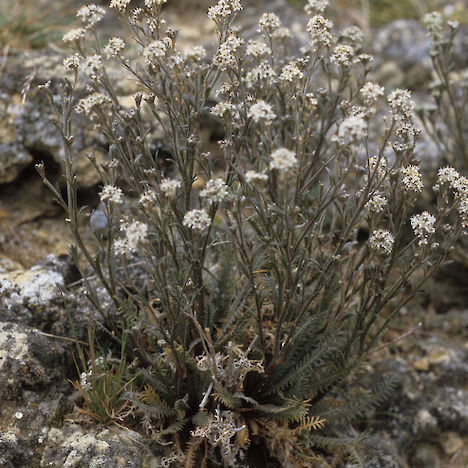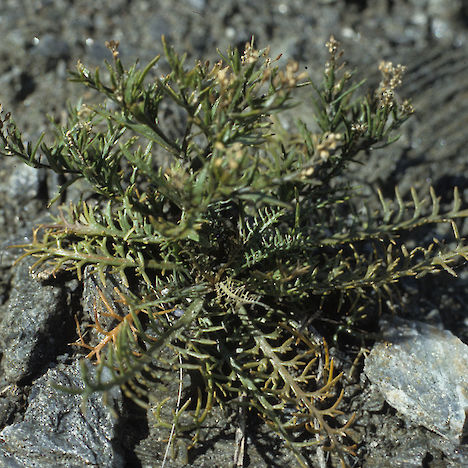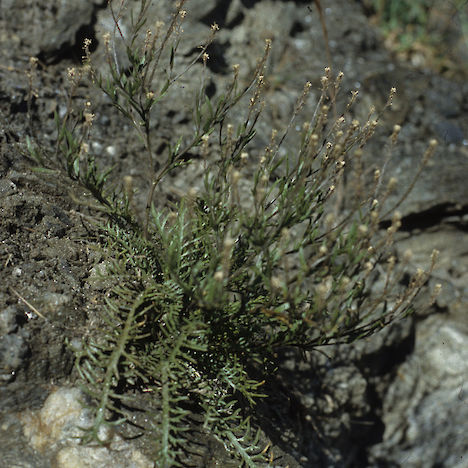Other names:
Lepidium sisymbrioides subsp. kawarauThreat category:
Threatened: Nationally Critical?Regions:
OtagoDistribution:
Central Otago
Key Features
- Grey green or dark brown, deeply tap-rooted herb with a rosette of linear, deeply pinnate, basal leaves up to 19 cm long. Erect, branched flowering stems with smaller leaves bear abundant tiny scented flowers which in female plants turn into small capsules 3-5 mm long. Separate male and female plants are unique within the family (Brassicaceae).
- Differs from L. solandri by the leaves having longer and narrower terminal and primary pinnae, more numerous secondary pinnae, sepals and ovaries with fewer hairs, and narrower ovaries.
- This species was formerly known as Lepidium sisymbrioides subsp. kawarau.
Distribution and Habitat
- Endemic to the South Island, east of the main divide from north Canterbury to Central Otago (Galloway district, Manuherikia Valley).
- Short and tall tussock grassland, bare hillsides, salt pans, grey scrub and other poorly vegetated ground. On open clay or salt pans, limestone talus, gravel veneers overlying schist, mudstone, or eroded silts and clays.
Threats
- Habitat modification and loss.
- Animal browsing.
- Competition with exotic plants (e.g. thyme).
- Seed predation by invertebrates.
Management Opportunities
- Survey for new locations.
- Mark known sites.
- Protection of habitat.
- Propagation of plants for re-establishment at appropriate sites.
- Weed control.
- Avoid afforestation of known sites.
Monitoring Options
- Check existing populations annually.
- Report new locations to DOC, NZPCN.
Further Information and Support
- New Zealand Plant Conservation Network (NZPCN). http://www.nzpcn.org.nz
- Weed and pest animal management - Department of Conservation, Regional Councils.
- References
- Dopson, S.R.; de Lange, P.J.; Ogle, C.C.; Rance, B.D.; Courtney, S. & Molloy, J. (1999). The conservation requirements of New Zealand’s nationally threatened vascular plants. Threatened Species Occasional Publication 13. Department of Conservation, Wellington.
- Allen, R.B. (2000) Inland Lepidium recovery plan. Threatened Species Recovery Plan 32. Department of Conservation, Wellington.
- Peter de Lange, Peter Heenan, David Norton, Jeremy Rolfe and John Sawyer (2010). Threatened Plants of New Zealand. Canterbury University Press, Christchurch. 472 pp.
- Heenan P.B., Mitchell A.D, McLenachan P.A., Lockhart P.J., and de Lange P.J. (2008). Natural variation and conservation of Lepidium sisymbrioides Hook.f. and L. solandri Kirk (Brassicaceae) in South Island, New Zealand, based on morphological and DNA sequence data. New Zealand Journal of Botany 45: 237–264.





